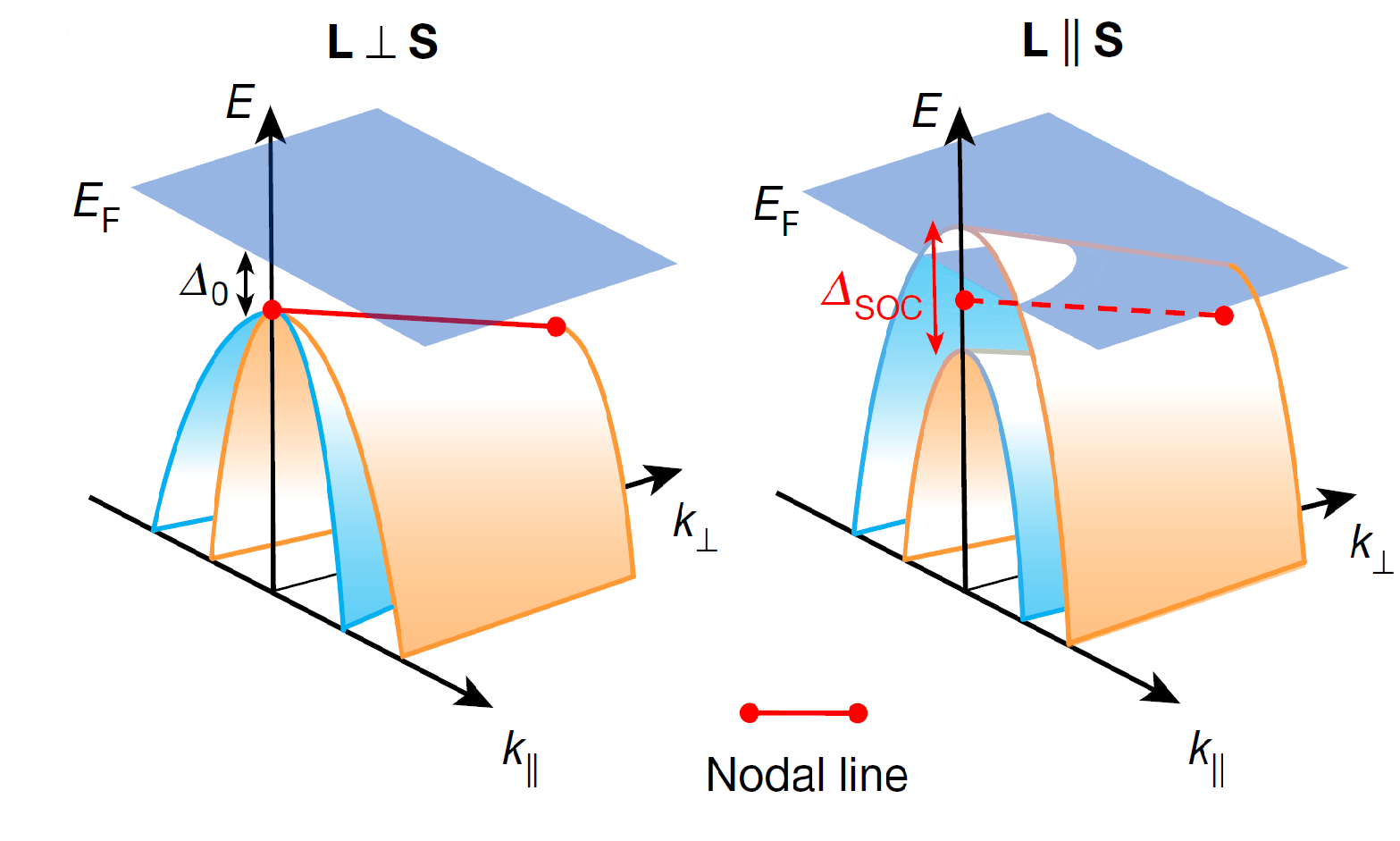Yurii Skourski, HLD Dresden.
A group of researchers from Korea, USA, and HLD have demonstrated that topological nodal-line degeneracy of spin-polarized bands in magnetic semiconductors can induce an extremely large angular dependence in the magnetotransport. A phenomenon that the researcher called colossal angular magnetoresistance. The findings demonstrate that magnetic nodal-line semiconductors are a promising platform for realizing extremely sensitive spin- and orbital-dependent functionalities.
In ferromagnetic nodal-line semimetals, including previously reported Fe3GeTe2, Co2Sn2S2, and Co2MnGa, the band-crossing points of spin-polarized bands near the Fermi level (EF) are protected by crystalline symmetry and form a line in momentum space. When spinorbit coupling (SOC) is taken into account, opening and closing of the SOC gap (ΔSOC) is determined by the relative orientation between the orbital angular momentum (L), fixed along a certain crystal axis, and spin direction (S), rotatable by external magnetic fields. A related but distinct behavior was expected in ferromagnetic semiconductors if the spin-polarized conduction or valence bands possess a topological nodal-line degeneracy. In such ferromagnetic nodal-line semiconductors, the SOC lifts the band degeneracy and pushes one of the bands towards EF by ΔSOC/2, depending on the relative orientation of L and S (Figure 1). Therefore, when the bandgap Δ and ΔSOCare comparable, spin rotation by external magnetic fields drastically modulates the bandgap and thus charge conduction, leading to the colossal angular magnetoresistance.
The researchers demonstrated this behavior successfully for the self-intercalated layered ferrimagnet Mn3Si2Te6, both undoped anddoped with Ge and Se. The resulting variation of the angular magnetoresistance with rotating magnetization exceeds a trillion percent perradian (Figure 2). Notably, the resulting angular magnetoresistance is controlled exclusively by spin rotation; pulsed-field measurements revealed no field-induced phase transitions up to at least 70 Tesla.

Figure 1: The electronic gap Δ remains intact for L ⊥ S in the presence of SOC, while the lifting of nodal-line band degeneracy for L || S pushes one of the bands towards the Fermi level. This induces the insulator-to-metal transition, controlled by the relative orientation of S against L, resulting in a colossal angular magnetoresistance.

Figure 2: Angular response of ρab for an undoped, Ge-doped, and Se-doped Mn3Si2Te6 crystals as a function of magnetic-field orientation at different temperatures. For the doped samples, the resistivity taken at H = 14 T and low temperatures is beyond the measurement limit (dashed line) near H || ab.
Colossal angular magnetoresistance in ferrimagnetic nodal-line semiconductors,
J. Seo, C. De, H. Ha, J. E. Lee, S. Park, J. Park, Y. Skourski, E. S. Choi, B. Kim, G. Y. Cho, H. W. Yeom, S.-W. Cheong, J. H. Kim, B.-J. Yang, K. Kim, and J. S. Kim, Nature 599, 576 (2021).
https://www.nature.com/articles/s41586-021-04028-7
Contact: skourski@hzdr.de






